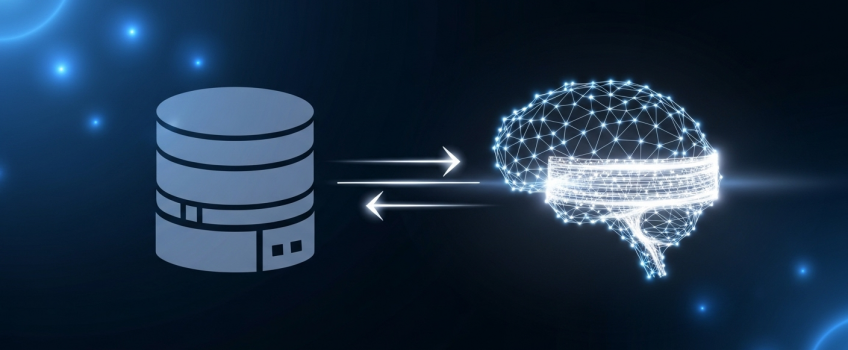Build a "Corporate Brain" with RAG & Your Data Warehouse

Your Data Is Ready. Now What? Building an Autonomous 'Corporate Brain' with RAG and Your Data Warehouse
Every modern enterprise has invested heavily in a centralized data warehouse—be it Snowflake, BigQuery, Redshift, or another platform. It is sold as the "single source of truth," a vast repository of structured data holding the answers to the most critical business questions. Yet for most employees, this vault of knowledge remains locked.
The critical "why": To get an answer, you need a key. That key is typically a data analyst who can translate your business question into SQL, run the query, and interpret the results. This human-in-the-loop process is a fundamental bottleneck. It's slow, it doesn't scale, and it keeps valuable insights siloed away from those who need them most. What if you could give everyone in your company a key? What if you could build an autonomous "Corporate Brain" that allows users to converse with your data warehouse in natural language?
This isn't science fiction. At ActiveWizards, we architect these intelligent systems by connecting the world of large language models with the structured reality of enterprise data. This article presents a production-oriented blueprint for building an autonomous RAG agent on top of your existing data warehouse.
The Architectural Blueprint: A Conversational Layer for Your Data
The goal is to create an intelligent agent that acts as an expert data analyst. When a user asks a question, the agent must understand the intent, identify the right data, generate a correct query, execute it safely, and synthesize the results into a coherent answer. This requires a carefully orchestrated set of components working in concert.
Diagram 1: High-level architecture of a RAG-based 'Corporate Brain' for a data warehouse.
Rethinking RAG for Structured Data
Most discussions about Retrieval-Augmented Generation (RAG) focus on unstructured documents in a vector database. Our approach is different. For a data warehouse, the RAG process looks like this:
- Retrieval: This isn't a vector search. The "retrieval" step is the generation and execution of a precise SQL query to fetch raw, structured data from the warehouse.
- Augmentation: The raw data rows returned by the SQL query are "augmented" into the context of a final prompt for a Large Language Model (LLM).
- Generation: The LLM "generates" a natural language summary of the data, directly answering the user's original question.
This distinction is critical. Success depends less on semantic similarity and more on the agent's ability to generate syntactically correct and logically sound SQL.
Deep Dive: The Text-to-SQL Challenge and the Importance of Metadata
The hardest part of this architecture is the Text-to-SQL component. An LLM cannot generate accurate SQL if it doesn't understand your database schema. Sending the entire DDL for hundreds of tables is impractical.
The Solution: A curated metadata layer. Before attempting to generate SQL, the agent must first perform a "Metadata Lookup." This involves providing the LLM with the most relevant information for the user's query, such as:
- The schemas of potentially relevant tables.
- Crucially, well-written descriptions and comments for tables and columns. A column named `TXN_AMT` is ambiguous; `TRANSACTION_AMOUNT_USD` with the comment "The final transaction amount in US Dollars after returns" is invaluable context for the LLM.
- Examples of foreign key relationships.
- A few examples of well-formed queries (few-shot prompting).
Garbage metadata in, garbage SQL out. Investing in a clean, descriptive data catalog is a prerequisite for building a reliable Corporate Brain.
Allowing an AI agent to generate and execute arbitrary SQL queries directly against your production data warehouse is a massive security and operational risk. A robust safety layer is not optional. In a production system, this layer should perform several checks:
- Syntax & Permission: Does the query use a read-only role? Does it try to access restricted tables?
- Cost & Complexity: Does the query perform a full table scan on a multi-billion row table? Reject it before it runs.
- Deny-listing: Block dangerous commands (`DROP`, `DELETE`, `UPDATE`) and functions that could be abused.
For novel or complex queries, this layer could even require human approval before execution. This gatekeeper ensures the agent is a helpful analyst, not a rogue operator.
Production-Ready Checklist: Beyond the Prototype
Moving from a cool demo to a trusted enterprise tool requires rigorous engineering. Here are the key production considerations:
- Security: Is the agent using a dedicated, read-only database role with minimum necessary permissions? Is the SQL validation layer in place?
- Cost Management: Are you caching results for frequently asked questions? Do you have alerts for runaway query costs from your warehouse provider?
- Observability: Are you logging every question, the generated SQL, the query execution time, and the final answer? This is essential for debugging and tracing inaccuracies.
- Accuracy & Feedback: How do you handle hallucinations or incorrect SQL? You must implement a user feedback mechanism (e.g., a thumbs up/down) to flag bad responses and fine-tune the system.
- Performance: Is the end-to-end latency acceptable to users? Caching and optimizing your metadata lookup are key levers for performance.
The ActiveWizards Advantage: Bridging Data and Intelligence
Building an autonomous Corporate Brain is the quintessential challenge at the intersection of data engineering and AI. It requires deep expertise in both domains: the discipline of database architecture, security, and performance from the data world, combined with the nuanced art of prompt engineering, agentic design, and LLM orchestration from the AI world.
At ActiveWizards, this intersection is our specialty. We architect the robust data foundations and build the intelligent, data-aware agents that unlock the true value of your enterprise data, transforming it from a passive repository into an active, conversational partner in your business.
Unlock Your Corporate Brain
Ready to transform how your organization interacts with its data? Our experts can help you design and build a secure, scalable, and production-grade conversational AI layer for your data warehouse.



Comments (0)
Add a new comment: